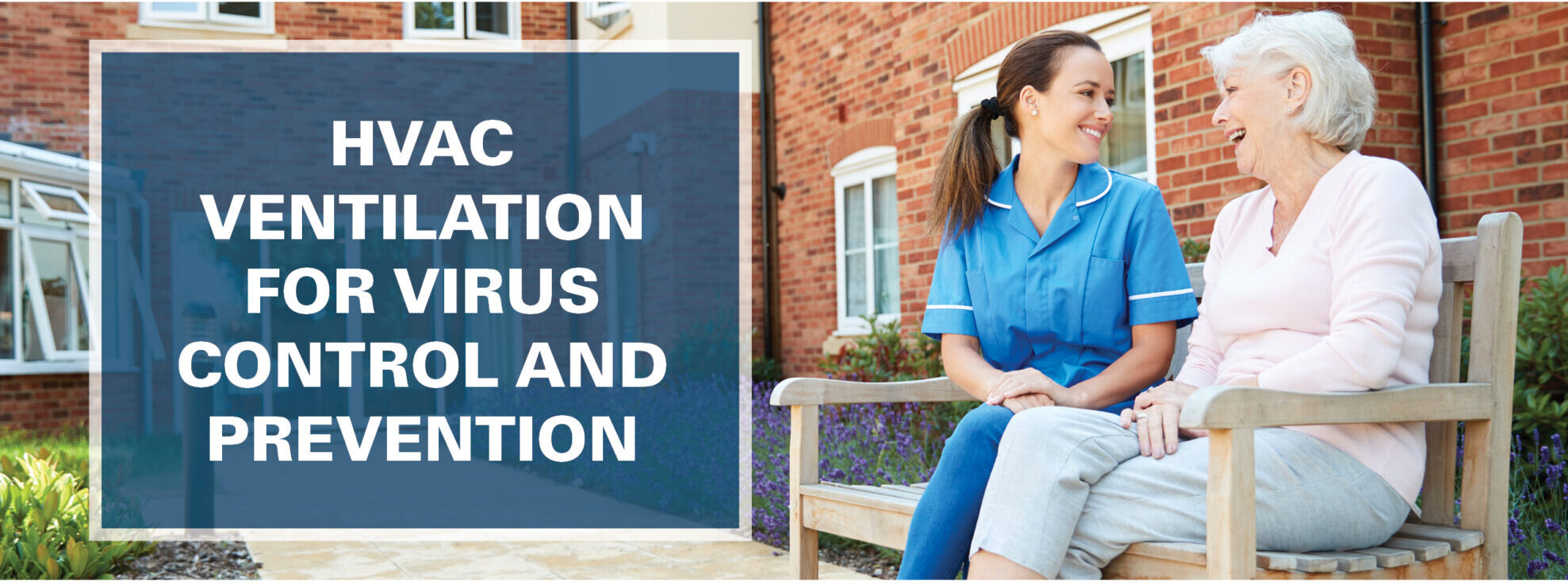
HVAC Ventilation for Virus Control and Prevention
As you know, COVID-19 is obviously having a substantial impact on the healthcare industry – and building ventilation is one of the foremost concerns.
HVAC systems are designed to maintain indoor air quality (IAQ) and prevent the spread of disease. Not only does poor ventilation fail to prevent disease it can actively spread infectious agents through airborne means. Unfavorable indoor environmental conditions can also worsen patients’ symptoms or ailments. To achieve airflow standards, HVAC equipment must meet high ventilation rates and filtration requirements.
Allana Buick & Bers (ABB) is open to support essential business – like hospitals and assisted living facilities – and is here to help. ABB’s team of mechanical engineers and building experts have developed a diagnostic and corrective program designed to improve indoor air quality
Ventilation Codes and Design Guidelines
We generally think of ventilation as simply moving air from one location to another through duct work. The air is cleaned by filters and released into the intended space. However, when it comes to care facilities, specific rooms need to be either positively or negatively pressurized with respect to adjacent areas.
Typical healthcare HVAC system design incorporates high outdoor air ventilation and/or specialty filters to for odor control, proper pressure relationships, and minimum air change rates based on the zone designation. The HVAC system must be capable of maintaining air changes and properly conditioning the spaces served.
ANSI/ASHRAE/ASHE Standard 170-2017 details guidelines for environmental control of bacteria, viruses, and other microorganisms in health care facilities – including hospitals, nursing facilities, and outpatient facilities. Although specific design requirements can vary greatly due to local and state regulations, here are several common design reference standards for medical facility HVAC systems:
- ASHRAE Standard 170 Ventilation for Health Care Facilities
- ASHRAE Standard 62.1 Ventilation for Acceptable Indoor Air Quality
- NFPA 90A Standard for the Installation of Air Conditioning and Ventilation Systems
- NFPA 99 Health Care Facilities Code
- NFPA 101 Life Safety Code
Building Pressure – Negative and Positive Pressure Relationships
Positive pressure ensures airborne pathogens do not contaminate occupants or equipment outside of a room. Extra air is introduced to positively pressurized areas to push contaminates away from the entrance.
Negative pressure removes potential contaminants out of an area and exhausts them outside. Negative room pressurization is an isolation technique used in hospitals to prevent cross-contamination from room to room.
- Positive pressure – supply more air than removed by return and exhaust
- Negative pressure – return and exhaust more air than supplied
ASHRAE Standard 170: Ventilation of Health Care Facilities 7.1.a.1 states that “design of the ventilation system shall provide air movement that is generally from clean to less clean areas.” To contain potential viruses in an assisted care room, the room should be negative with respect to the adjacent corridor. This can be tested by squeezing a smoke tube outside the room, two inches from the bottom of the closed door, and watching the trail. With negative pressure, the smoke should flow from outside the room under the door. Another means of testing is to hold a thin strip of tissue parallel to the door to determine the direction of air flow.
Air Changes
Numerous studies on the transmission of infectious disease particles have documented how air changes per hour (ACH) provides a dilution factor for possible infectious agents. Air changes per hour is simply the measure of air volume that can be added/removed from a space in a given hour. One air change occurs when all air has been replaced one time – it is a complete recycling of the air.
Air Changes Per Hour = Volume of Air Flow in cubic ft. per minute (60) / Cubic feet of the area
The Centers for Disease Control and Prevention recommends hospital patient rooms have at least six total air changes per hour, and a minimum of two air changes per hour of outdoor air.
Air Filtration
Increasing filter efficiency is a relatively inexpensive measure that can be implemented to reduce the potential spread of airborne infectious agents. However, the decision to increase efficiency should be made cautiously, with a careful understanding of the protective limitations resulting from the upgrade.
The filtration needs of a building should be assessed with an objective to implement the highest filtration efficiency that is compatible with the existing HVAC system and its required operating parameters. Operational considerations for replacing filters with a higher efficiency filter include higher pressure loss, which will result in airflow reduction through the system. Airflow reduction may result in inadequate ventilation, reductions in heating and cooling capacity, or potentially frozen coils. Higher efficiency filters will also “load up” faster, and will require more frequent changes.
Filters with higher MERV ratings will provide benefits to the indoor environmental quality of the building, but may only capture some virus particles by interaction with the media. Most virus particles are approximately 0.1 micron and even the best HEPA filters (MERV 17-20) only capture 0.3 micron at 99%, so full capture is not possible.
Resources
COVID-19 Frequently Asked Questions
ANSI/ASHRAE/ASHE Standard 170-2017: Ventilation of Healthcare Facilities
Facility Manager Checklist
- What is the condition of mechanical equipment?
- What filtration systems are in place? What are the filter efficiencies?
- Is all equipment connected and controlled?
- What are the control sequences?
- Are equipment access doors and panels in place and appropriately sealed?
- Are all dampers (outdoor air, return air, bypass, fire and smoke) functioning? Are they sealed well when closed?
- Are supply and return ducts connected to their grilles and registers?
- How is the building zoned? Where are the air handlers for each zone?
- How does air flow through the building? What are the pressure relationships between zones?
- Are utility chases and penetrations, elevator shafts, and fire stairs significant airflow pathways?
- Is there obvious air infiltration? Is it localized?
- Does the system provide adequate ventilation given the building’s current occupancy and functions?
- Where are the outdoor air louvers? Are they easily observable?
How We Can Help
The reality of post-COVID-19 life is that owners and facilities managers at healthcare and assisted living facilities will need to address their buildings’ indoor air quality, especially if the system has not been recently inspected or if the staff have not been specifically trained in HVAC maintenance. Improvements in air exchange rates will help to mitigate the spread of the virus and instill confidence in building occupants. Currently the CDC does not expect to have a vaccine until mid-2021. If our goal is to improve our buildings to help slow down the spread of virus and restore confidence in hospitality, office, and multi-family spaces, we must act proactively.
ABB’s team of mechanical engineers and building experts have developed a diagnostic and corrective program designed to improve indoor air quality. First, we review the existing system conditions, design, control sequences, and existing equipment capabilities. Once our staff has completed our assessment, we can identify potential retrofit options for increased air quality, design and oversee corrective measures.
Questions – Ask an Expert
Allana Buick & Bers’ Mechanical Engineers, Enclosure Consultants and Building Experts are here to answer your questions about ventilation, air circulation, and HVAC maintenance. Follow us on twitter or visit our website for answers to your questions and discussions with other hospitality personnel and building experts.
- See our FAQ page for additional information.
- See our Services page to see what services we can provide for your project.
- Ask our experts on Twitter: @ABBAEmechanical
- Or reach out to our experts directly if you have specific questions:
CATEGORY: HVAC/Ventilation Systems
